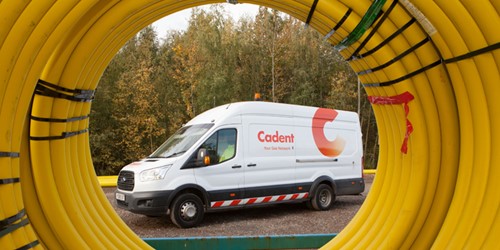News
Cadent: green gas HGVs are key to net zero

Cadent Gas Ltd. has released a report detailing strategies to deliver an H2 refueling infrastructure to the UK by 2050,with a focus on switching HGVs to green gases.
According Cadent, The Future Role of Gas in Transport sets out a clear pathway showing how the UK's heavy goods sector can start to achieve a significant reduction in emissions in the next few years.
The transportation sector is responsible circa 20 MM metric t of CO2 annually. By switching HGVs to green gases, including biomethane, bio-CNG (compressed natural gas), and hydrogen, emissions could be reduced by up to 38% by 2030.
The report calls for the following:
- Hydrogen to be seen as a key decarbonation option in transport, heat and industry in order to achieve effective scale in production and distribution to bring down costs.
- A ramping up of rollout of biomethane and bio-SNG (Substitute Natural Gas) production capacity to realize the full feedstock potential before direct demand for these fuels' peaks in the 2030s.
- Existing gas networks to be harnessed to deliver hydrogen fuel to heat, industry and transport.
Key milestones to delivery of a national hydrogen refueling infrastructure by 2050 are set out in the report:
2021-2025
- Acceleration of biomethane production capacity and the scaling of bio-SNG (Synthetic Natural Gas) production.
- First 100 – 200 hydrogen HGVs demonstrated and industrial hydrogen production underway.
- Localized hydrogen blending in the grid and trials of 100% hydrogen grids in very small regions to demonstrate suitability for heating.
2025-2030
- Achieve full utilization of biomethane feedstocks and expansion of Bio-SNG production capacity, alongside full national coverage of CNG/LNG refueling stations for HGVs.
- Rapid ramp up in hydrogen HGV manufacturing capacity and rollout of basic station network in order to support very rapid market transition from 2030.
- Hydrogen blending in the network increases and 100% hydrogen trials expand to deliver the first hydrogen town.
2030-2035
- CNG/LNG HGV sales begin to fall and are replaced by hydrogen HGVs.
- Early CNG/LNG stations start to be upgraded to dispense biomethane and hydrogen.
- Hydrogen blended into the gas network across the country and multiple hydrogen towns/cities are achieved.
2035 – 2040
- The sale of diesel and biomethane -trucks ends having been made possible by the rapid conversion of CNG/LNG filling stations to hydrogen.
- Gas pipelines will be delivering 100% hydrogen to large clusters around the country.
2040 - 2045
- A new milestone is reached as transition of the gas network to deliver hydrogen for use in most of our homes and transport becomes reality.
2050
- Zero-emission HGVs are now the norm – close to long-haul HGVs running on hydrogen.

